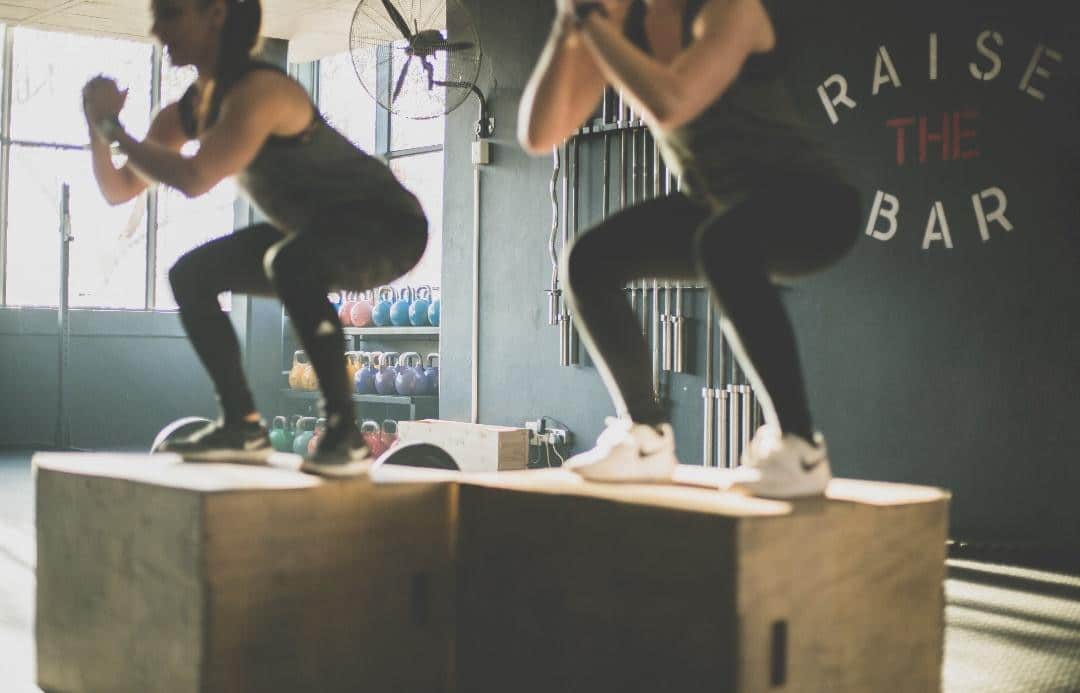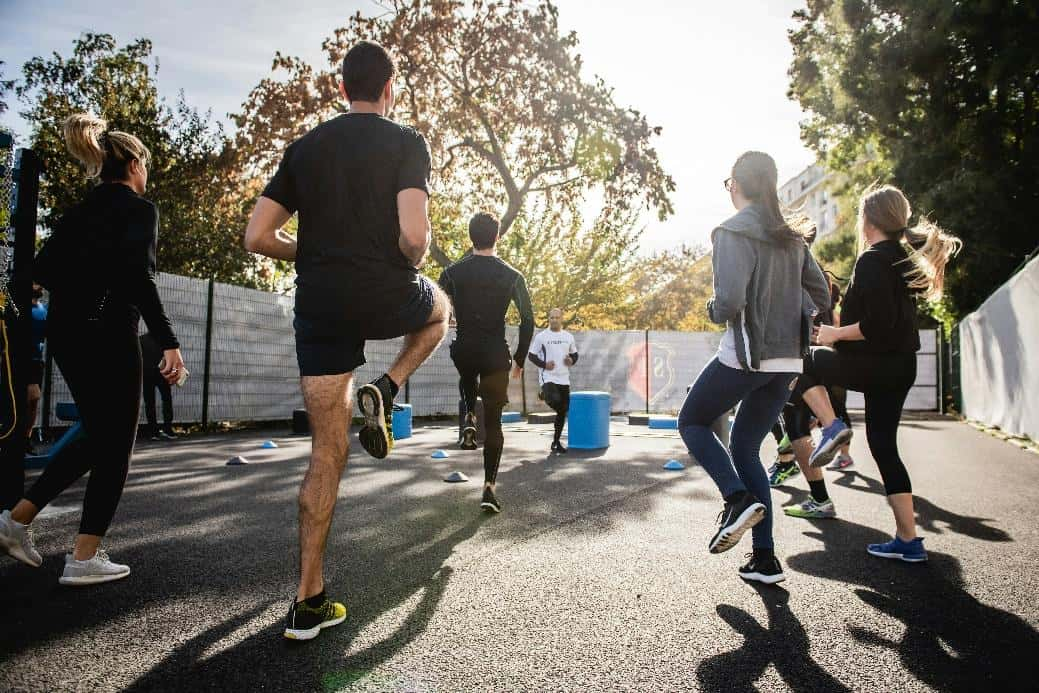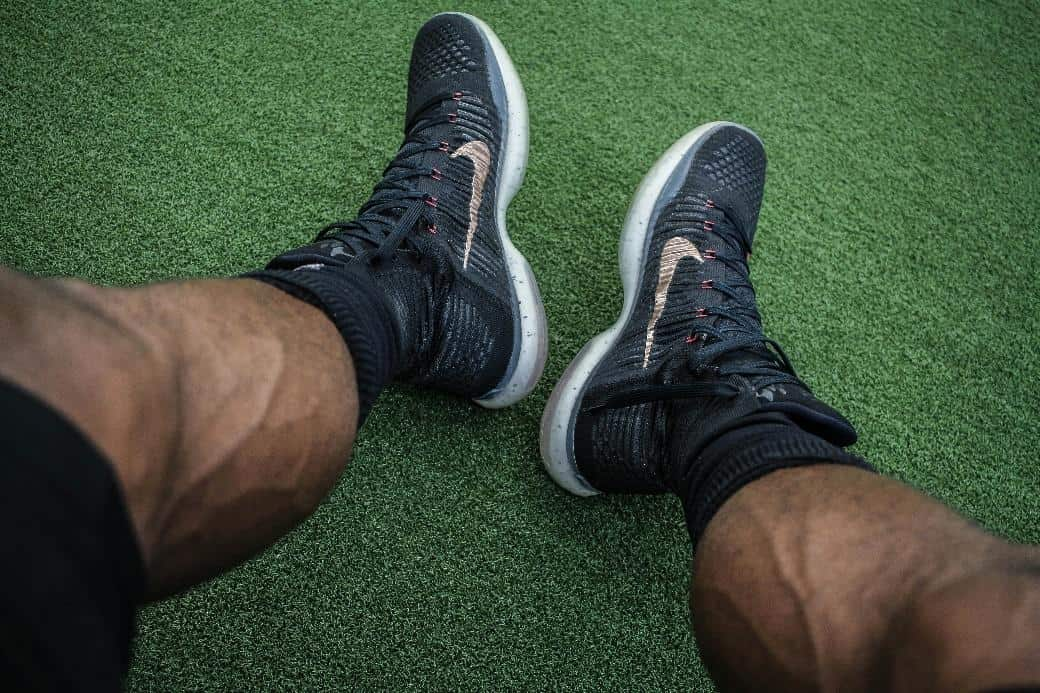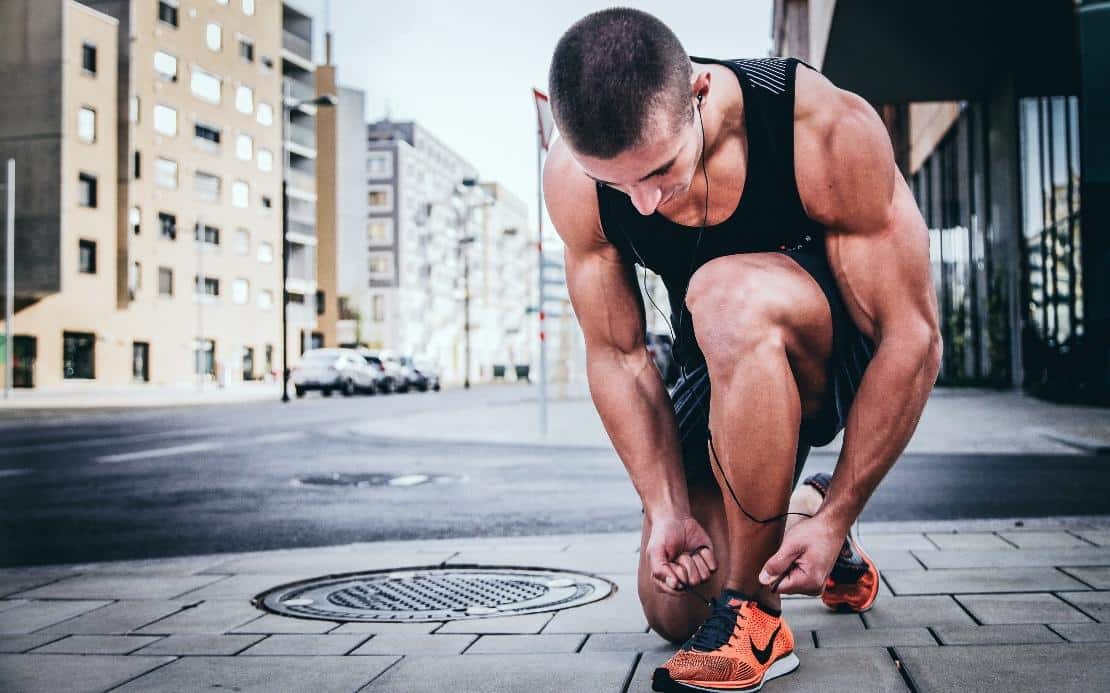3 de January de 2024
The Effective Bodyweight Leg Workout for your Athletes
Why Perform Bodyweight Leg Training?

Bodyweight training is a global fitness trend that continues to rise in the rankings of the American College of Sports Medicine (Thompson, 2023). Disciplines like calisthenics have exponentially gained followers in recent years, but bodyweight leg training is the most complex part of calisthenics. Athletes don’t always have access to training equipment or a gym, either due to economic reasons or because they must train in the field for logistical reasons.
I learned long ago that a coach should not depend on equipment, but rather the equipment should depend on the coach. A good repertoire of exercises will save us from situations that often arise in the gym, whether it’s because a machine stops working, can’t be used due to overcrowding if it’s a public gym, or because we realize on the fly that it’s better to vary the movement. In this article, we detail some exercises that can be done for bodyweight leg training.
[banner_device_2]
We won’t go into detail explaining each exercise since it’s said that a picture is worth a thousand words, so it’s preferable for you to watch the accompanying video. Instead, we’ll explain why we do each exercise so that you can substitute another if it achieves the same objectives. In the final part of the article, we propose a session with some of the exercises mentioned so that you can carry it out with your athletes, but this recommendation is entirely arbitrary since the type of exercise, number of sets, and other variables will depend on your athlete’s goals and level.
Warm-Up to Activate Muscles and Improve Athlete’s Weak Points

Before carrying out bodyweight leg training, we must perform a good warm-up. First, we will activate the muscles, raise the heart rate, and increase body temperature to get the body into training mode. This part is often overlooked when not lifting heavy weights in the main part of the strength session, but that’s because we consider warm-up as a waste of time. Take this initial part of the session as an opportunity to work on weak links, improve mobility, and introduce the athlete to the session.
An effective warm-up for bodyweight leg training should include a warm-up phase where we awaken ourselves and do the same with the muscles and neural connections. The second part will focus on improving joint mobility, both for the session and for long-term muscular and joint health. The last part of an effective bodyweight leg training warm-up will activate the muscle groups we will work on with simple exercises at the muscular level, but aiming to address weak points such as balance or mobility deficits in certain areas.
Getting Started
Footfires
The first exercise will be to wake up and get the lower body muscles moving, but also to improve coordination and leg acceleration, which is a fundamental part in most sports. The footfires exercise involves moving the feet as if the ground were on fire, so we should move them as quickly as possible.
3-Step Drop
This exercise can be the 3-step drop or any other that resembles your sport more closely. The idea is to continue increasing the athlete’s body temperature and improving some aspects of the game. In this case, it’s oriented towards American football, but it can be used as a warm-up in any sport, or you can look for a technical element of your sport and work on it here.
Joint Mobility
Runner’s lunge to rotational reach – spiderman lunge
This exercise is considered one of the best for joint mobility due to the large number of joints it targets. For those of us looking to perform effective bodyweight leg training, we must enhance hip and thoracic spine mobility, as they will directly influence positions such as squats, and also affect the activation of the gluteal muscles, which may be inhibited by excessive shortening of the hip flexors.
Bear Squat
We continue mobilizing joints with the bear squat exercise. We’ll mainly feel it in the back of the legs and the glenohumeral joint. In our case, we won’t be doing exercises with weight overhead, such as an overhead squat or a snatch, but this movement will be useful for stretching the entire posterior chain, from hands overhead to feet.
Side gorilla
The third and final joint mobility exercise continues in the quest to open up the hips, a joint that often needs this type of exercise because it tends to be excessively rigid. Gorilla steps involve first moving to one side and then to the other, mimicking the movement of said animal.
Muscle Activation
Cossack squat
These types of squats will help us activate the quadriceps and adductors, in addition to continuing the stretching and mobility exercises. Alternate sides slowly and in a controlled manner.
Hip airplane
We now move on to activate the posterior area while improving balance and thoracic spine mobility with lumbar spine control. With unipodal support, aim for a straight line from your foot to your head, while the supported leg is slightly flexed. Once you have control, rotate towards the side of the supported leg, i.e., to the left if your left leg is supported, or to the right if it’s the one you have supported.
Quadruped rainbows
Now it’s time for the glutes, and as you may have noticed, always with complementary goals, in this case, hip mobility. Raise one leg and make a circular motion before retracing your steps.
Main Part: First Power, Then Strength

After completing the warm-up, we will begin our bodyweight leg training. In any effective session, we will start with power exercises and then move on to strength exercises for the simple reason that when training for power, we must have all of our capabilities available to move our body at maximum speed possible.
First Part: Power
There are countless power exercises for the lower body, especially plyometric ones. We propose some of the most interesting ones with which you can design an effective bodyweight leg training.
- Bulgarian jump squat (video)
- Box jump (video)
- Kneel to squat jump (video)
- Broad Jump to Shuffle (video)
- Plyo lunge complex (video)
Second Part: Strength
Once the first part with power exercises is completed, we will proceed to focus on strength exercises, aiming to target specific muscle groups. The major muscle groups of the lower body are the hamstrings, glutes, quadriceps, and calves. In addition to them, there are often overlooked adductors and hip flexors that should be included in our bodyweight leg training if we want it to be effective.
Hamstrings
- Nordic curl (vídeo): The Nordic hamstring curl is one of the exercises that cannot be missed to improve hamstring strength and prevent injuries.
- Slider leg curl (vídeo):the hamstrings will work under a lot of tension with this exercise. If you don’t have sliding disks or other equipment, you can use a towel, which will serve the same purpose.
- Hanging leg curl (vídeo): Another different way to stimulate the hamstrings with bodyweight is by using a cage or any material like TRX that allows us to hang.
Glutes
- Frog reverse hyper (video): This exercise is one of the best you can do with bodyweight if you want to target the glutes directly. It’s important that your athlete keeps their knees bent at all times, as straightening them will activate the hamstrings more.
- Side Lying clam raise (video): Hip abductions mainly stimulate the gluteus medius, a key muscle in sports performance and injury prevention.
- Single leg hip thrust (video): The star exercise for the glutes couldn’t be missing. We’ll do it on one leg to increase intensity and work on stabilization..
[banner_guide]
Quadriceps
- Reverse nordic curl – kneeling quad extension (video): This exercise is not very commonly used but highly effective. It follows the same dynamics as the well-known Nordic curl, but in this case, in reverse to target the quadriceps directly..
- Skater squat (video): Advocates of single-leg leg training place this exercise as one of their favorites for developing strength and muscle mass in the quadriceps.
- Shrimp squat (vídeo): This variant of the skater squat is somewhat more complex but tremendously effective. If your athlete is not yet able to perform it, start with the skater squat progression until they can.
Adductors and Hip Flexors
- Copenhagen plank (video): There is life beyond abdominal planks. These planks can be performed on the field with the help of a partner or using a bench. Follow the progression in the video with your athletes, and you’ll greatly reduce muscle injuries due to adductor weakness.
- Seated Leg Lift in Straddle (video): Hip flexors are not often included in many sports programs, but they can be stimulated very simply with this exercise or a very similar one: Seated Leg Lift in Pike (video)
Calves
- Elevated single-leg calf raises (video): The calf comprises a group of muscles that are fundamental for athletic performance. They can be developed by performing heel raises on elevated surfaces to have a greater range of motion.
- Donkey calf raises (video): A variation of calf raises is this one where we lean the torso forward. If done with equipment, a partner can stand on the lower back area to increase the intensity of the exercise.
Effective Bodyweight Leg Training for Your Athletes

Throughout the article, we have outlined the needs of bodyweight leg training, as well as the exercises that, in our opinion, are the most interesting, although there are many more. In this section, we propose a bodyweight leg training session, but it is entirely generic. You should adapt the sets and the number of exercises to the needs of your athletes. What must be considered, however, is to perform a good warm-up, start with power exercises, and then select movements for each muscle group based on the athlete’s needs.
The proposed session aims for a fatiguing workout at a time in the season when we can generate such a stimulus for the athlete. If we are in the midst of the season or close to a competition, it should not be done as we are aiming for typical hypertrophy and muscular endurance activation, which requires the athlete to have the necessary recovery time.
Warm-Up
- Footfires (vídeo):Perform for 20 seconds, rest for 10 seconds, repeat for another 20 seconds aiming for increased speed, rest for 10 seconds, and repeat a third time for 20 seconds at maximum speed possible.
- 3-Step Drop (video):Work on it for a couple of minutes to further elevate heart rate and prepare our legs for activation.
- Runners lunge to rotational reach – spiderman lunge (video): Perform 10 slow repetitions on each side and hold the position for a few seconds to maximize the exercise.
- Bear Squat (video): Perform 10 slow repetitions and hold the position for a few seconds to maximize the exercise.
- Side gorilla (video): Perform 10 repetitions on each side and pause in the squat position while leaning your torso backward and keeping it as vertical as possible.
- Cossack squat (video): Perform 10 repetitions on each side, totaling 20 repetitions.
- Hip airplane (video): Perform 10 alternating leg movements, switching from one leg to the other each time.
- Quadruped rainbows (vídeo): Perform 10 repetitions with each leg alternately.
Main Part: Power
The best way to prescribe strength training, especially power training, is to control the execution speed. If you have a velocity measurement device like Vitruve, you can ask the athlete to work until they reach a certain percentage of velocity, for example, 20%. If you don’t have one, you’ll have to do it by eye or ask your athlete to stop the set when they notice they are noticeably moving slower or covering a shorter distance compared to the first repetition.
- A. Bulgarian jump squat (video): 3 sets of maximum repetitions per side until a noticeable decrease in speed compared to the first repetition.
- B. Broad Jump to Shuffle (video). 3 sets of maximum repetitions until a noticeable decrease in distance compared to the first repetition.
- C. Plyo lunge complex (video): 3 sets of maximum repetitions until a noticeable decrease in jump height compared to the first repetition.
Main Part: Strength
The letters indicate the order of exercises and whether they are performed together. In this case, we will do D1 + D2, E1 + E2, and G1 + G2 together, and F separately. Exercises D1 + D2 and E1 + E2 will have a 40-second rest between them, allowing for a brief rest before moving on to the next exercise, and not repeating the same exercise until about two minutes have passed. The G1 + G2 exercises will be done as a superset, meaning we will not rest between them and will stop their execution when fatigue prevents us from doing a minimum of six repetitions.
- D1. Nordic curl (vídeo): 3 sets. Each set until unable to control the descent.
- D2. Seated Leg Lift in Straddle (video): 3 sets. Each set until the range of motion decreases due to fatigue.
- E1. Frog reverse hyper (video): 4 sets. Hold each repetition for two seconds with maximum glute contraction. Stop the set when the athlete cannot maintain this strict posture for two seconds.
- E2. Copenhagen plank (video):4 sets of 20 seconds each side. Choose the appropriate progression level so it’s not excessively easy nor the athlete has to break the plank before 20 seconds.
- F. Skater squat (video): 5 sets with an RIR (Reps in Reserve) of 2, meaning the athlete should stop the set when they feel they have two repetitions left before muscular failure.
- G1. Side Lying clam raise (video): Infinite series in conjunction with G2. Perform the exercise on both sides and move to the next without rest. Do the same with exercise G2 and return to G1. Repeat as many times as possible until unable to complete a minimum of six strict repetitions in the exercise.o.
- G2. Donkey calf raises (video)
[banner_device_1]
References
Thompson, W. R. (2023). Worldwide Survey of Fitness Trends for 2023. ACSM’s Health and Fitness Journal, 27(1), 9–18. https://doi.org/10.1249/FIT.0000000000000834
